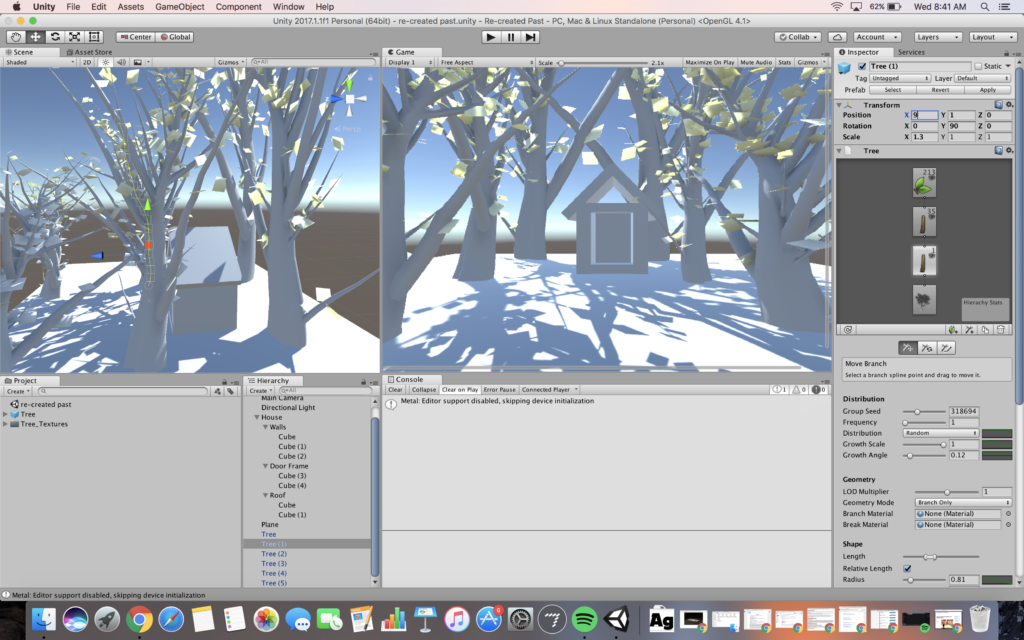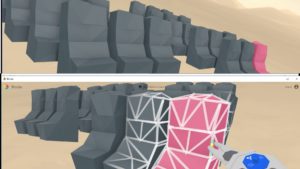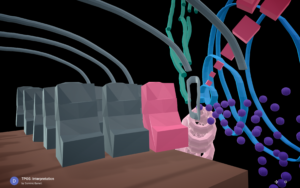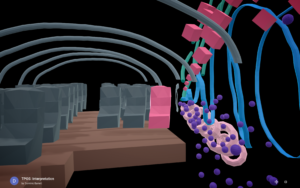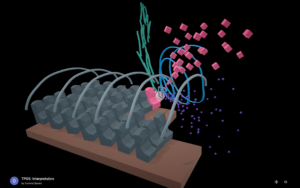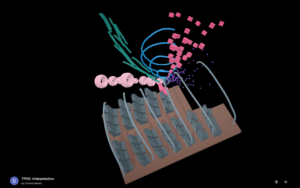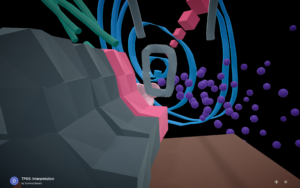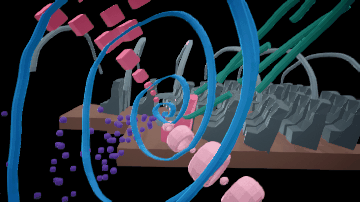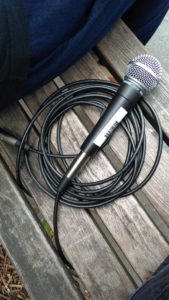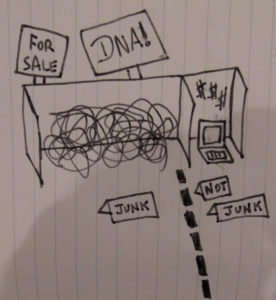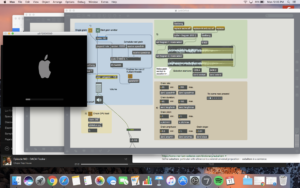For our first go at Unity, we’ve been tasked with re-creating a space. I’m going back to a ravine I would play in during the summer when I was a child, and found an old abandoned house in the middle of nowhere.
Category: Fall 2017
Classes for the Fall 2017 Semester
Junk DNA: The Campaign
I’ve gone down a little bit of a rabbit hole with my thinking about Junk DNA and analogies, metaphor, and communicating to the public. In talking with people about my topic, I’ve had to describe the rift between “pro junk” vs “anti junk” positions. Switching from an already complicated scientific phenomenon to a complicated philosophical conversation about “value” and how we determine it doesn’t lend itself to an “elevator pitch”-style, compact explanation.
So I tried to develop a higher level metaphor for the entire situation. We have a complicated, multi-faceted debate that can seamlessly morph between facts and science into value judgement and personal world views. And then back again. An argument where both sides are trying to advance a broader goal of the general good, but differ on terminology, rubrics, and what is really considered “good” in the first place.
Maybe I just have a bad case of 2017, but this reminded me of politics.
TempEx Junk DNA Notes: A Shakespearean Ferrari Factory
Initial research sources with quick take notes
“Junk or functional DNA? ENCODE and the function controversy”
Pierre-Luc Germain • Emanuele Ratti • Federico Boem
Source: Biology & Philosophy
Date: November 1, 2014
Linking here for documentation’s sake. Will remove link if this is somehow inappropriate or otherwise requested.
Quotes and impressions:
“and that selection is but a useful proxy for relevant functions, which might well be unsuitable to biomedical research.”
(emphasis mine) This is elaborated on at length in the article, but an interesting qualifier to note.
Continue reading “TempEx Junk DNA Notes: A Shakespearean Ferrari Factory”
Failed network: Hotline
I’ll be using these slides for my presentation on Tuesday, outlining the obsolete application and protocol Hotline.
Depiction of Space
For our depictions of space assignment, I used Google Blocks as my main tool. I have used Tilt Brush before, but was very interested in trying the block-centric/grid oriented opinions of Google Blocks.
Being able to manipulate the geometry was great, and there were a lot of practical structure building tools that I found myself wishing for while in Tilt Brush. Things that might be complicated to describe in words were intuitive to perform in the Oculus, and I’d be more than happy to return to Blocks as a content creation tool.
Part of the assignment is not giving away whose story we were tasked with interpreting, but I will include a link to the hosted Google Blocks VR at the bottom which will have the information included.
For now, here is some documentation of the piece:
And here is the hosted Blocks URL ***spoilers!*** this has the full info:
https://vr.google.com/objects/9mTGqmT2DN3
(This is another plus for Google Blocks, which I wound up sharing in the class Slack)
Presence Experiment
Jinhee and I did our “Creating Presence” experiment in Washington Square Park. We had both separately considered that sound was a good way to create presence (especially with a modest budget for time). After some discussion thought that sensory deprivation can help in boosting the sensitivity of other senses, and that this could be used as a tool in creating “presence” in a user.
“Close Your Eyes”
Using a headphone splitter, we were able to create a little guided audio tour using two headphones, two microphones (one for the speech, one for the listening to ambient noises), and the Zoom to record everything while also being the amplifier for the tour guide and tourist.
The idea was for the tour guide to give a “blind” audio tour of Washington Square Park. The tourist, closing their eyes and being lead by the tour guide, holds a shotgun mic in order to hear directionally around them.
The tour lasted approximately ten minutes. You are invited to close your eyes and listen to a short historical tour of Washington Square Park.
Direct download the mp3 here.
Temporary Expert in Junk DNA
To start off Temporary Expert, I pulled a random topic from the basket and got… Junk DNA!
I’m excited to be a four week expert on this. I’m segmenting this first blog post into two parts. My initial, uninformed ideas about junk DNA, and then my thoughts, feelings and followup after doing research.
At first, the thing that immediately draws me to the topic is the use of the word “junk”. Why is it junk? Says who? What are the motivations for such a categorization? I assume scientific, that this might be DNA that doesn’t “do” anything. But perhaps there are financial motivations for figuring out what certain things are caused by DNA, which could open up a possibility of critique.
My mind goes there because of “junk sales”, “junk bins” and so on. This term is evocative to me personal, as a somewhat hoarder, in the sense that I’m almost challenged to find something that I value inside of junk. “Junk” is almost a dare. Find something, it screams. The obscure piece of electronics. The dusty but solid piece of furniture. The cloth strips or old polaroids ripe for an art project.
And of course, ITP’s famous junk shelf comes to mind. I check it at least once a week (sometimes maybe two… three… ok, four times). It is junk, but is certainly useful to everyone on the floor at one point or another. With this in mind, I made this video:
This was made with my (not junk!) Macbook Pro and a quick Max MSP patch:
These are my initial, gut reactions to junk DNA. Was I right?
First, Junk DNA is known as a sub category within “noncoding DNA“. From the wiki, the key take aways are that noncoding DNA, “are components of an organism’s DNA that do not encode protein sequences,” and “When there is much non-coding DNA, a large proportion appears to have no biological function, as predicted in the 1960s. Since that time, this non-functional portion has controversially been called junk DNA.”
Oooh controversy! Lets look at the footnote for that.
ENCODE Project Writes Eulogy for Junk DNA
“In 2007, the pilot project’s results revealed that much of this DNA sequence was active in some way. The work called into serious question our gene-centric view of the genome, finding extensive RNA-generating activity beyond traditional gene boundaries.”
However, this article did not point me towards who even created the term “junk DNA” to begin with. Doing a quick search lead me to the charmingly old school “junkdna.com” (Marina, what was that about the internet being an unreliable appeal to authority?), and Dr. Susumu Ohno:
http://www.junkdna.com/ohno.html
https://en.wikipedia.org/wiki/Susumu_Ohno
And even though I thought that this topic might be a departure from more of my performance and sound based interests, I found this:
From the wiki:
“The biologist, with no formal training in music, ‘decided to assign notes according to the molecular weights’ and ‘put the heavier molecules in lower positions, and the lighter molecules higher’.”
This is an amazing bit of serendipity for me, as I have been interested in isomorphisms and event scores as a way to instigate creative inspiration and connection. The above paragraph reads to me like Fluxus in a lab coat, and I love it.
I didn’t expect to find this happening in the category of junk DNA. Not sure how much more I should indulge this specific aspect, but I’ll take it as a sign that I’ve got a great topic and the next few weeks will result in fruitful and inspiring research.
Components for understanding all of this will include understanding genomics, the differences between DNA vs. RNA, noncoding vs. coding vs. junk DNA, how gene/dna sequencing works, among many other things. (The more I read preliminarily, the more I uncover as necessary information. This list is expanding daily.)
Experts could include Dr.Ohno, the Encyclopedia of DNA Elements (ENCODE)(https://www.encodeproject.org), which is a project of the US National Human Genome Research Institute (NHGRI), and people who have challenged ENCODE’s work, like Dr.Dan Graur. His name came up in a few articles that I came across. (As one example; http://bigthink.com/paul-ratner/75-of-the-human-genome-is-junk-dna-claims-new-research)
